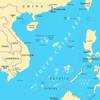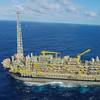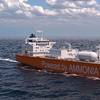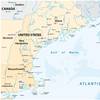Opportunities for Growth as Chinese Economy Evolves
The global breakbulk and heavy-lift markets have had to navigate choppy waters in recent years. Not necessarily due to a shortage of freight, but as a consequence of unsustainably low freight rates. The global economic recovery since 2009 has been slow, and competition for the multipurpose sector has intensified due to bulkers, container lines and RoRo’s making forays into the breakbulk and heavylift market, as they look to diversify their business and make up for the lack of demand in their respective core markets. It is a concerning trend that could serve to devalue quality within the sector, as well as impacting health and safety.
Yet, despite these challenges there is genuine positivity and opportunity within the multipurpose sector. In particular, for the progressive operators that espouse flexibility, dynamism and efficiency, they have been able to respond to the market’s changing demands, as well as growth in specific regions, and the changing nature of the cargo those vessels are required to carry.
Thanks to the increasing number of renewable energy infrastructure projects, as many developing Asian economies begin to pivot away from fossil fuels, Asia has played a key role in being the global driver in recent years for these breakbulk and project cargo shipments, in conjunction with the significant growth in renewable projects that we are also seeing in Europe and beyond.
However, it is China – as the most conspicuous industrial trader – that provides an insightful look in terms of what is changing in the multi-purpose segment, and the challenges, and opportunities that lie ahead. Concerns about China’s deceleration are justified to some extent. It responded to the global financial crisis in 2008 with extensive policy stimulus, which has left many banks, businesses and local governments substantially leveraged. Steps are being taken to prevent a hard landing, with the People’s Bank of China reducing policy rates and the reserve requirement ratio since November. Additionally Nomura believe that the government will soon officially lower its growth target for 2016 to assist with the ongoing process of economic restructuring, and that this is likely to be supported by increased fiscal assistance to boost infrastructure spending.
A key part of this will be the One Belt, One Road national development strategy. Since it was unveiled in 2013, China has been mobilizing its political, economic, and diplomatic resources to further integrate itself into the world economy through trade, investment, infrastructure, connectivity, and other development projects. For China’s trade partners, the attempt to shore up China’s economy may trigger growth and stimulate demand for their goods. However, this will have to be offset against the cost increases that will result from a less favourable exchange rate.
Finding New Markets
Finding new markets for Chinese-made goods is a priority for economic planners, as increasing exports would help ease the burden of industrial overcapacity. The government has sought to open new trading destinations for Chinese companies through a host of government-led initiatives. Africa is one of the foremost targets for China’s ambitions, as a region where exponential growth is still possible, and whose economic outperformance during the global recession showed the enormous promise of its emerging markets. Indeed China hopes to achieve $400 billion in trade volumes with Africa and raise its direct investment in the continent to $100 billion by 2020. Since the typical Chinese firm operating in Africa is a large state-owned enterprise, they tend to have a major competitive edge: subsidized government credit, which enables them to out-compete other bidders for African procurement contracts. To achieve these ambitions will require substantial heavy cargo movement, and given the expedited timelines favored by the Chinese government, specialist knowledge and expertise in implementing efficient transportation solutions.
China is therefore a crucial market for AAL, and one from which we expect to continue to realise significant growth. In line with these ambitions, all of our liner services collect cargo from China, and a significant amount of our tramp & projects divisions’ voyages take on cargo from Chinese ports. To provide our customers with the most responsive service we have an AAL management office in Shanghai and a number of representative offices in the main ports.
The Energy Sector
The energy sector is also a regular source of business for multipurpose carriers and uncertainties in global energy markets can certainly impact the demand for project cargo, services; for example, the world’s big energy groups have shelved $200bn of spending on new projects in recent months according to consultants Wood Mackenzie. However given that global businesses have a cumulative $4.4tn of cash on their balance sheets, and with S&P forecasting capital expenditure to rise 8% in 2015, we’re anticipating a sizeable uptick.
This is primarily due to the impressive growth of their renewables market. According to the U.S. government’s Energy Information Administration, China invested more than $89 billion in renewable energy projects in 2014 – a growth of 31% on the previous year. Beijing is aiming to generate 200 gigawatts (GW) of electricity from wind and 100 GW of solar by 2020, as part of their drive to have 15% of total energy consumption from non-fossil fuels by 2020.
For AAL, as a specialist breakbulk, heavy lift and project cargo operator, these are patterns that we’ve been anticipating for some time, and we believe that renewables will constitute a substantial part of our project cargo in the coming years. We continue to deliver significant movements in this sector, not just in China, but worldwide. One reason for this is that the technological expertise required has diversified, reducing wind power’s capital costs. This has resulted in the development of larger machines capable of increased power yield – which require higher hubs, longer blades and greater nameplate capacity.
In turn, the demand for high quality, specialist breakbulk cargo and heavy lift solutions for the components and machinery has become increasingly critical. Moving a 75-m long wind turbine is no small feat, and requires scrupulous planning and wide-ranging expertise. That, of course, is where we come in. These transportation challenges are nothing new to AAL, and with the youngest fleet of new generation and technologically advanced multipurpose heavy lift vessels we’re fully prepared for the growing demands of the renewables sector.
Increasing Competition
One of the biggest consequences for the multi-purpose sector of the slowdown in global trade since 2009 has been the increase in competition from the container and bulker sectors, which has inevitably affected margins, as well as the generic quality and potential health and safety within the industry, as these operators do not have the specialist equipment or expertise that is required to transport complex cargoes.
With regards to freight rates, in reality they are market driven and there is not a lot you can do about it. It is also highly likely that when container freight rates and demand improve, container lines will become much more reluctant to carry this complex and more time-consuming cargo, which could cause rates to rise dramatically.
At AAL, we understand that there is a certain amount of cyclicality in the markets and for that reason we focus on what we can control: our operating costs, driving efficiencies, delivering dependable services, and integrating our customers’ needs with our own. For us this is where the key difference lies: bulkers and container liners cannot provide the expertise, the technical capabilities, and attention to detail required to safely and consistently shift complex cargoes from A-to-B.
We have also seen some operators compromising on the cargo safety and cargo care standards that customers have every right to expect due to low freight rates. At AAL, we are proud of our reputation for the highest standards of cargo care, because we know that investments in safety pay dividends for our customers. They understand that supply chain integrity depends upon the reliability of each stage for the safe and reliable movement of their cargoes. In our market, short-term profits often result in long-term costs.
The significant advantage enjoyed by multipurpose operators is that we’re not dependent on one sector or market, but have the in-depth knowledge and experience to operate in a variety of specialist fields. This expertise and heritage has enabled AAL to realize considerable growth over the past few years. Despite the downturn of the markets, we have doubled our revenues and expanded our fleet, trade routes and services to cement our position as a truly global carrier.
There will always be some turbulence in global trade, and much like the changing domestic and international demands placed on China have required it to adapt to a changing business environment, AAL is taking this development as an excellent opportunity to respond and grow.
The Author
Wolfgang Harms, AAL’s chief representative for greater China and deputy managing director.
(As published in the November 2015 edition of Maritime Reporter & Engineering News - http://magazines.marinelink.com/Magazines/MaritimeReporter)

















